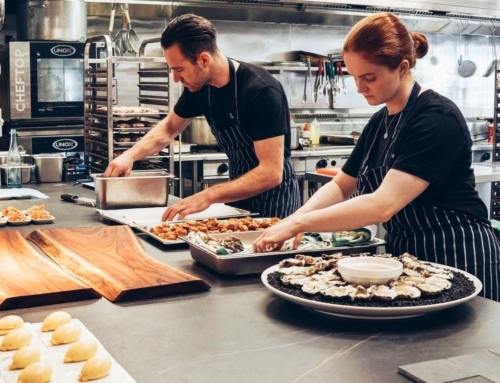The Only Food Safety Temperature Chart You’ll Ever Need

When it comes to running a food business, keeping your customers safe and healthy is non-negotiable.
A food safety temperature chart is an essential tool that ensures you’re delivering meals that are not only delicious but safe for consumption. Following proper cooking temperatures is key to building trust with customers, protecting employees, and meeting health regulations.

Why Cooking Temperatures Matter
Cooking food to the correct food safety internal temperatures eliminates harmful bacteria, reducing the risk of foodborne illnesses. For instance, cooking chicken to the recommended food safety temperatures—at least 74°C (165°F) for ground poultry and 82°C (180°F) for whole chickens—protects your customers from threats like Salmonella.
Adhering to the guidelines in a food safety cooking temperature chart can help your kitchen team ensure they are serving safe foods and protecting customers.
The Safe Cooking Temperatures
Food safety internal temperatures vary depending on the type of food being prepared, but they are all critical for eliminating harmful bacteria:
| Category | Minimum Safe Internal Temperature °C (°F) |
| Beef, Veal, and Lamb | |
| Ground Meat (burgers, meatballs, sausages) | 71°C (160°F) |
| Pieces and Whole Cuts | 63°C (145°F) (for medium-rare) |
| Pork | |
| Ground Pork (burgers, meatballs, sausages) | 71°C (160°F) |
| Pieces and Whole Cuts | 71°C (160°F) |
| Poultry (Chicken, Duck, and Turkey) | |
| Ground Poultry (burgers, meatballs, sausages) | 74°C (165°F) |
| Pieces (breasts, legs, thighs, wings) | 74°C (165°F) |
| Whole Bird | 82°C (180°F) |
| Eggs | |
| Egg Dishes (frittata, omelette, quiche) | 74°C (165°F) |
| Seafood | |
| Fish | 70°C (158°F) |
| Shellfish and Crustaceans (crab, lobster, shrimp, clams, mussels, oysters, scallops) | 74°C (165°F) |
| Hotdogs | 74°C (165°F) |
Using a food safety temp chart and monitoring proper cooking temperatures ensures that every meal is cooked thoroughly and ready to serve.
What is the Danger Zone?
The danger zone is the temperature range where bacteria, such as Salmonella and E. coli, can grow rapidly, increasing the risk of foodborne illness. This range spans from 4°C (40°F) to 60°C (140°F). Foods left in this range for too long become unsafe to eat.
Tips to Avoid the Danger Zone
Refrigerate Promptly
Store raw foods like meat and seafood below 4°C (40°F) to slow bacterial growth.
Reheat Thoroughly
Use a food thermometer to ensure leftovers reach at least 60°C (140°F).
Keep Hot Foods Hot
Maintain cooked foods above 60°C (140°F) when serving to prevent bacteria from multiplying.
Minimize Time in the Zone
Limit the time that perishable foods remain at room temperature.
Understanding and controlling the danger zone is a critical step in ensuring food safety and protecting your customers from foodborne illnesses.
Cook Smart, Keep Customers Safe
Take your commitment to food safety to the next level by exploring SafeCheck’s Food Handler Certificate Course. A well-trained team equipped with the knowledge and tools to handle food safely ensures your business thrives and your customers stay healthy.





